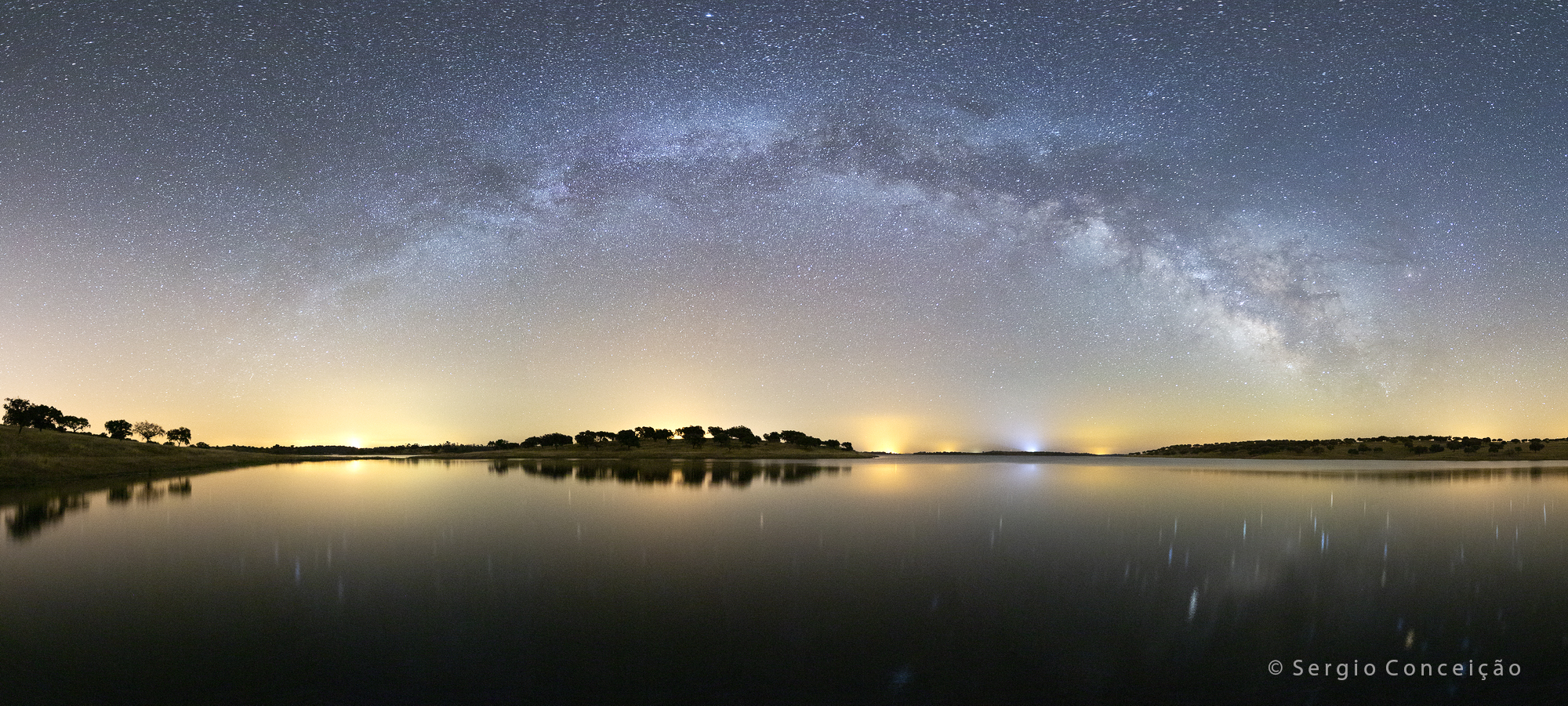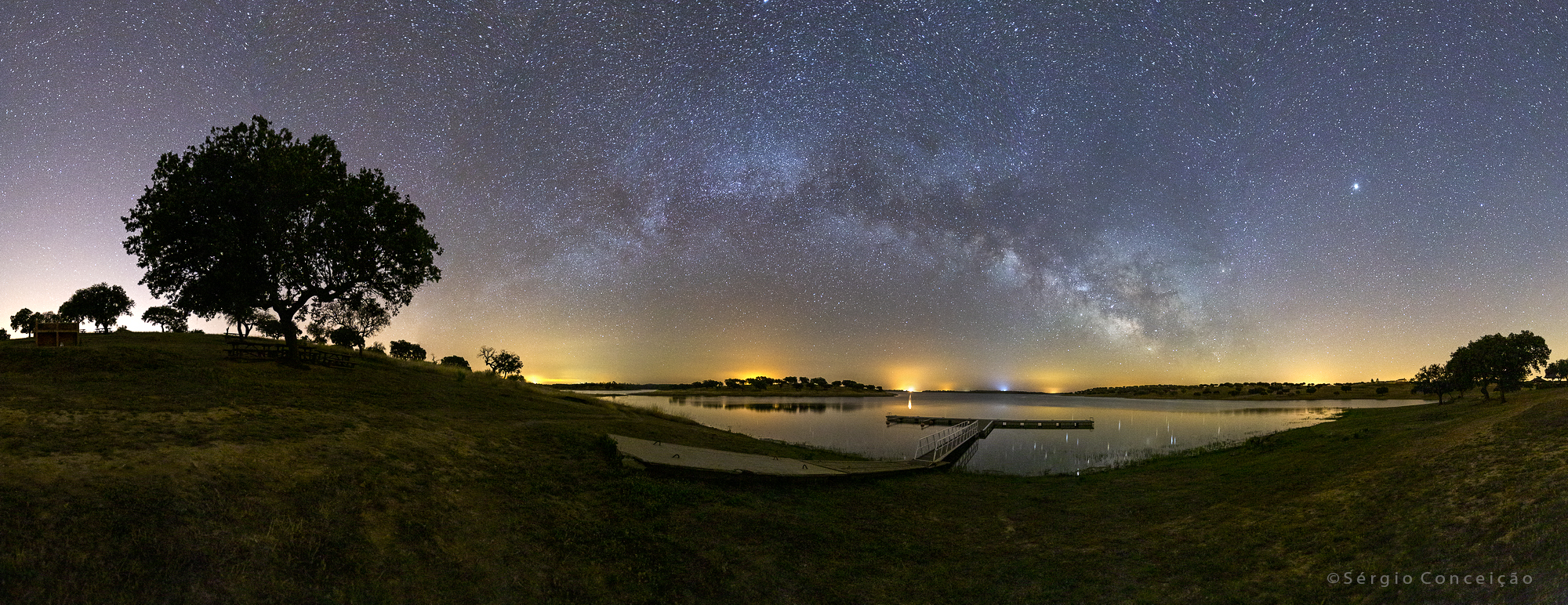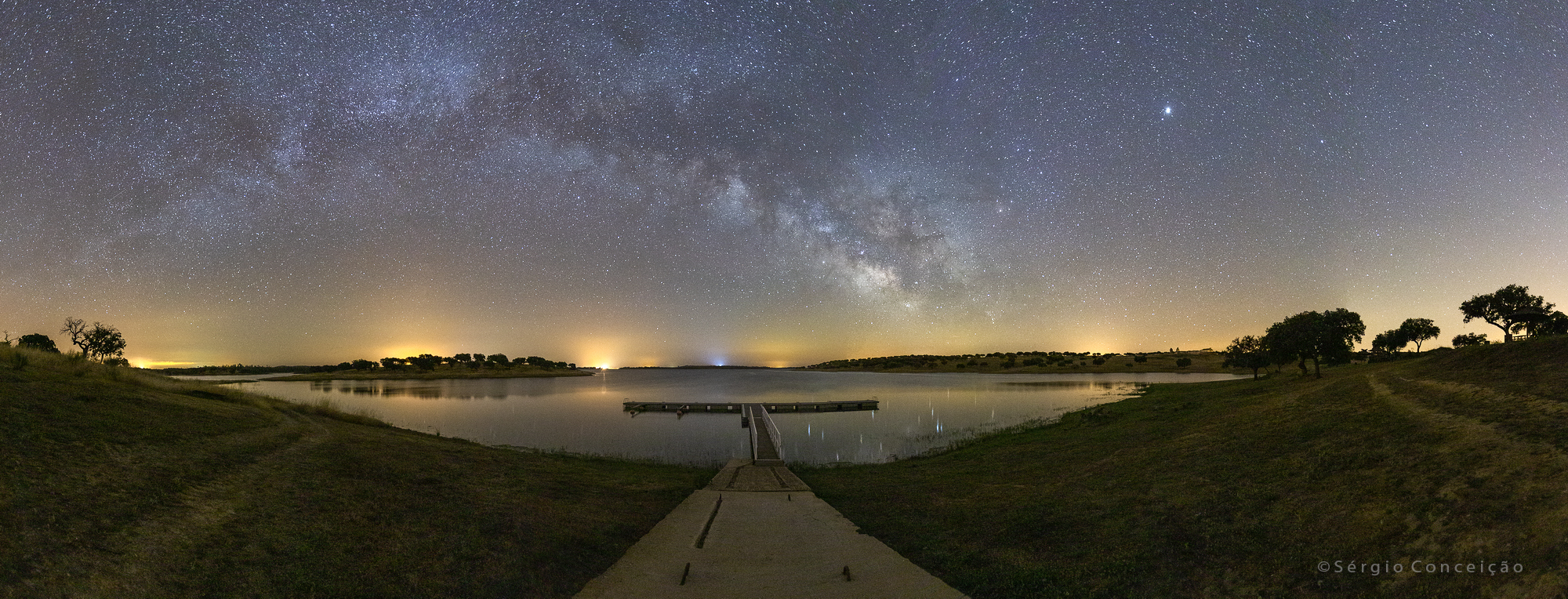Get Ready for Milky Way Season with These Galactic Night-Sky Photos

The Milky Way stretches across the early-morning sky in these glistening views captured by astrophotographer Sérgio Conceição in Campinho, Portugal.
After hiding behind the sun during the winter months, the Milky Way made its grand return to the morning sky in February. It is visible just before dawn from places with dark, clear skies. In the coming months, it will begin to rise higher in the sky, becoming visible earlier every morning until midsummer, when peak Milky Way viewing season arrives.
Conceição captured these stunning photos of the Milky Way when it was at its best last summer. He took the photos from the Dark Sky Alqueva Reserve in Portugal — an "astrotourism" destination with very little light pollution — on the evening of June 12, 2018.
Related: Stunning Photos of Our Milky Way Galaxy (Gallery)

During the summer months, the Milky Way can be seen rising after nightfall. Conceição photographed the Milky Way just a few minutes before midnight, when the Milky Way was highest in the sky. (For comparison, here's another view of the Milky Way captured from the same location on April 18 at 3:40 a.m. local time.)
Along with the full arc and dusty core of the Milky Way, Conceição's photos are rich with planets, constellations and bright stars. Antares, a red supergiant star that is one of the brightest in the night sky, appears as an orange speck near the right edge of the galactic arc.

The biggest and brightest object in these photos, located to the right of the Milky Way, is the giant gas Jupiter. Embedded on the inner edge of the arc nearby is Saturn, located in the constellation Sagittarius. And at the top of the arc is the Summer Triangle, an asterism (or star pattern) that consists of the stars Deneb, Vega and Altair.
Get the Space.com Newsletter
Breaking space news, the latest updates on rocket launches, skywatching events and more!
To capture these gorgeous views of our galaxy in the night sky, Conceição used a Canon EOS 6D DSLR camera with a 14mm lens. He captured a 10-second exposure for each image with the ISO set to 6400.
Editor's note: If you captured an amazing Milky Way photo and would like to share it with Space.com for a story or gallery, send images and comments to managing editor Tariq Malik at spacephotos@space.com.
- When, Where and How to See the Planets in the 2019 Night Sky
- How to Photograph the Milky Way in Light Pollution (Photos)
- Why You Can't See the Milky Way in the Spring Night Sky
Email Hanneke Weitering at hweitering@space.com or follow her @hannekescience. Follow us on Twitter @Spacedotcom and on Facebook.
Join our Space Forums to keep talking space on the latest missions, night sky and more! And if you have a news tip, correction or comment, let us know at: community@space.com.

Hanneke Weitering is a multimedia journalist in the Pacific Northwest reporting on the future of aviation at FutureFlight.aero and Aviation International News and was previously the Editor for Spaceflight and Astronomy news here at Space.com. As an editor with over 10 years of experience in science journalism she has previously written for Scholastic Classroom Magazines, MedPage Today and The Joint Institute for Computational Sciences at Oak Ridge National Laboratory. After studying physics at the University of Tennessee in her hometown of Knoxville, she earned her graduate degree in Science, Health and Environmental Reporting (SHERP) from New York University. Hanneke joined the Space.com team in 2016 as a staff writer and producer, covering topics including spaceflight and astronomy. She currently lives in Seattle, home of the Space Needle, with her cat and two snakes. In her spare time, Hanneke enjoys exploring the Rocky Mountains, basking in nature and looking for dark skies to gaze at the cosmos.









